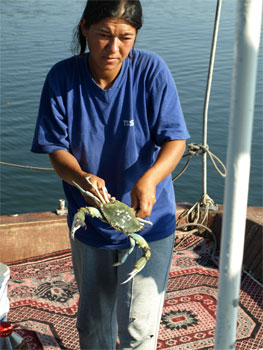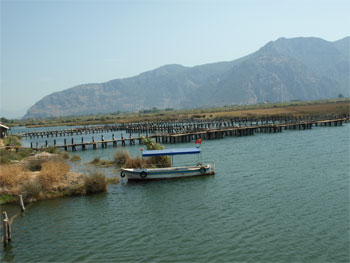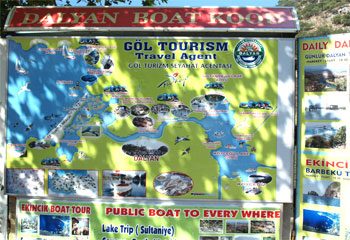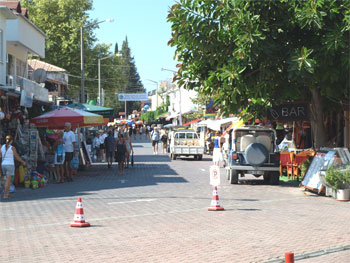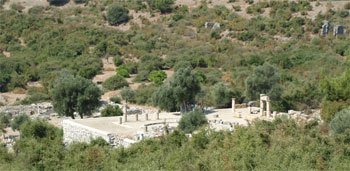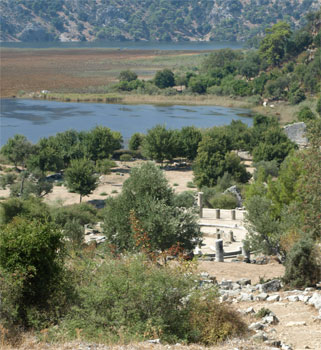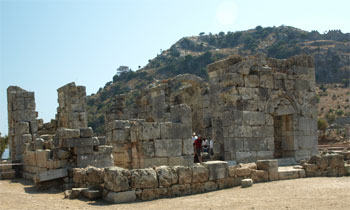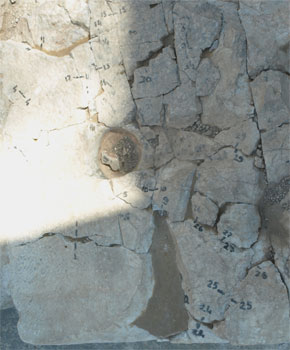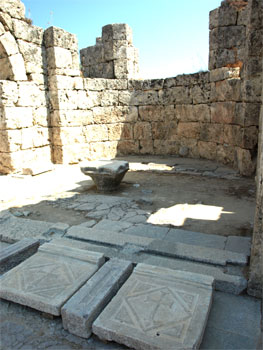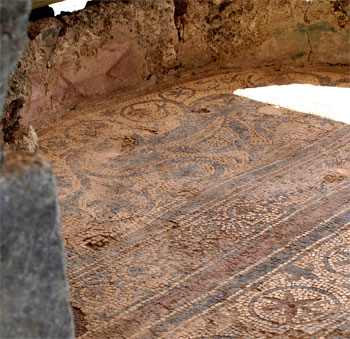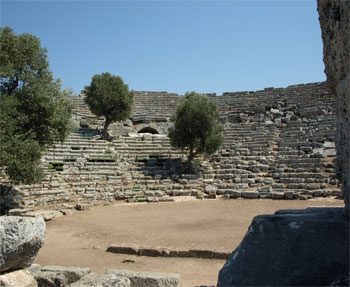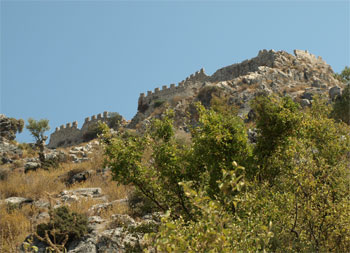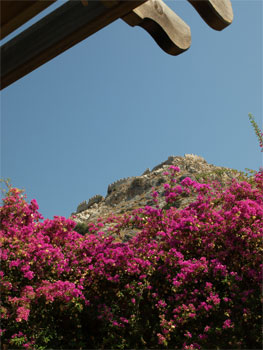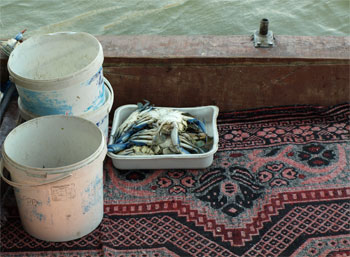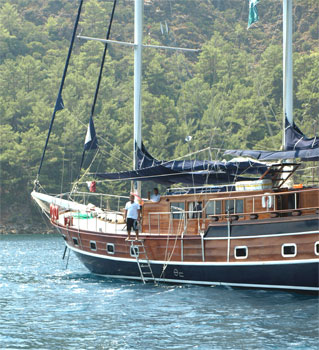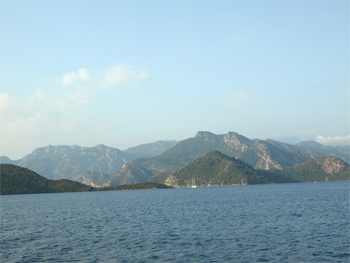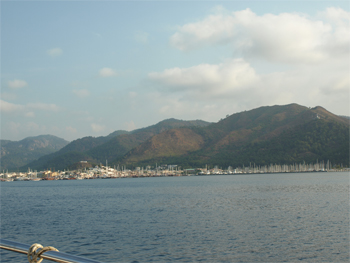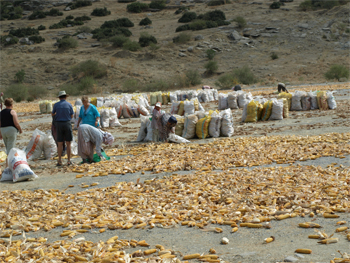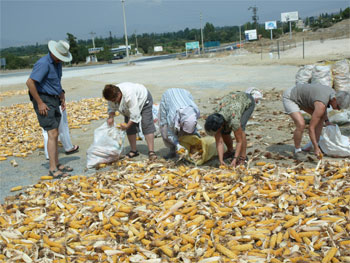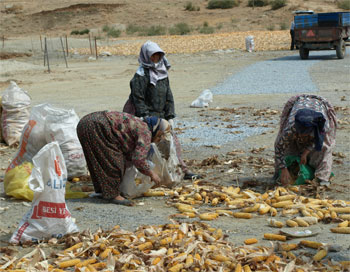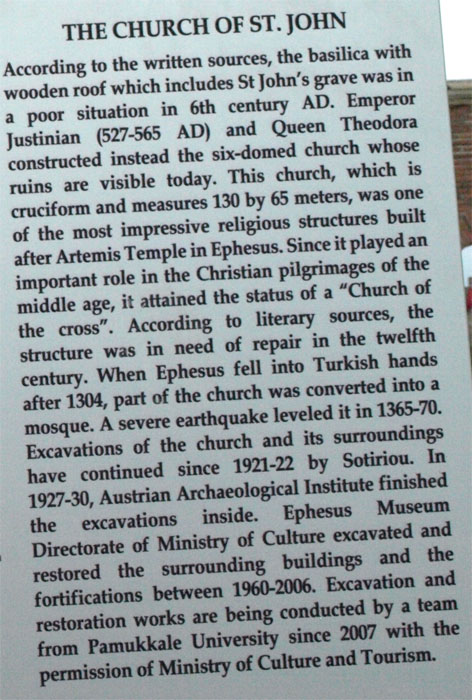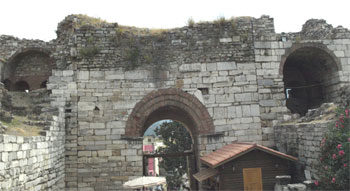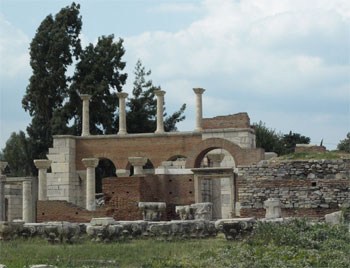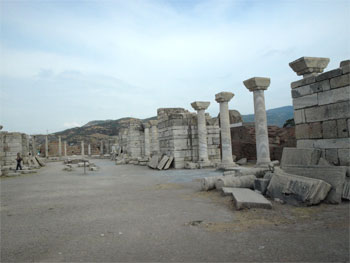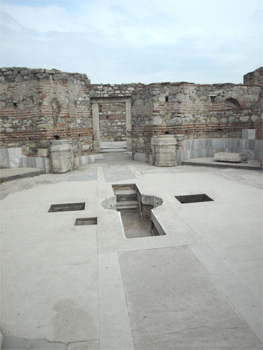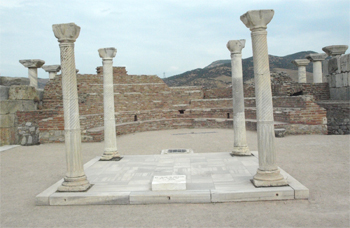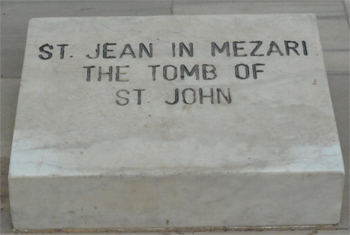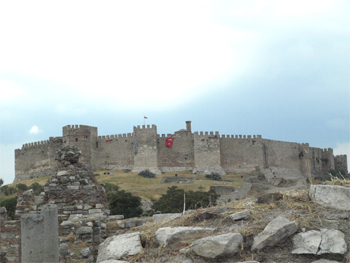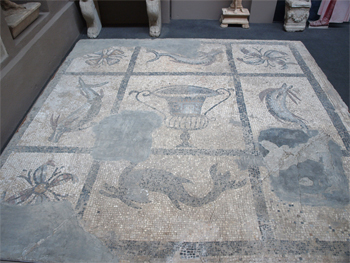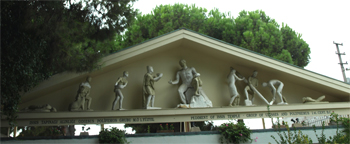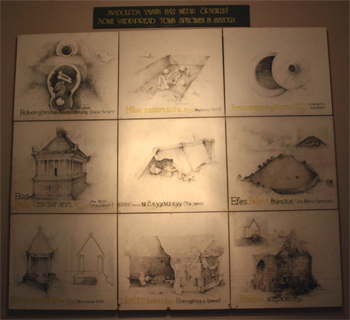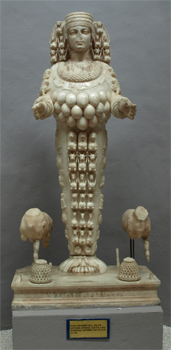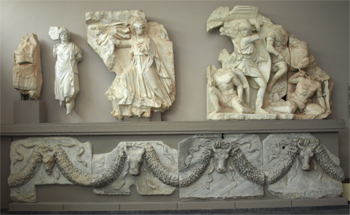Monday - 9/7 - on the Kubilay Sezen, Dalyan River Cruise, Caunos Ruins
Everyone slept late this morning but after breakfast we boarded a river boat in the harbor and motored across to the mouth of the Dalyan river and cruised around a sandbar and through the reeds choking the river delta. Silt had built up so the passage to the town of Dalyan was like cruising through the Everglades. On the way we stopped at the boat of a crab fisherman and his wife and several people ordered crabs to be picked up on our return. As we cruised up the river, we passed many fishing weirs and had a good view of more cliff tombs (Lycian or Pigeon tombs) with elaborate Greek-style facades. We stopped in the town of Dalyan long enough to stretch our legs and use the very nice toilets (cost: 1 TL).
Crabs to order
|
Crabber's boat - in an interesting state of repair |
Fishing weirs on the Dalyan River |
More Lycian or Pigeon tombs
|
Dalyan River map |
Street scene
|
Minaret and mosque
|
Next we headed on to the archeological site of the ancient village of Caunos. It was hot but we walked past pomegranate trees and blackberry bushes to the entrance of the Caunos ruins. From the hillside we could look down on what was once a nice harbor for trade ships - and attackers - that is now filled with reeds growing on the silt that washes down the river from the mountain lakes. This is an active dig site that has much work yet to be done. We entered the church (Roman Catholic), which may be one of the first buildings with a dome instead of a flat roof. They have uncovered a mosaic floor and the stone flooring that supported the wooden iconostasis. We looked down on the agora, a marble round building that was part of the Roman baths, and wandered into the theater. The streets were built in line with the sea breeze so the city could stay somewhat cool. (Link to further information about Caunos - use the back arrow key to return here.)
|
Caunos ruins |
Caunos ruins
|
Caunos ruins - church |
Another archeological jigsaw puzzle
|
Ruins in church |
Floor mosaic in church
|
Amphitheater ruins
|
Acropolis at Caunos |
Acropolis at Caunos
|
Back on the riverboat we headed back to the sea, but stopped to pick up the blue crabs at the fisherman’s boat. The crabs were steamed, wrapped in foil and ready to eat. |
|
|
Awaiting our return
|
Such an inviting ladder! |
Our gulet had moved out of the noisy, busy harbor so we had a quiet, clean area for swimming and lunch. The main course at lunch was rice and meat stuffed green peppers and stuffed zucchini.
The breeze was picking up so our captain hurried us out of the protected water and we headed to Marmaris for our last night on the boat. The sea was nowhere near as rough as the day before.
We anchored off the coast again and half of the group went for a swim after tea and cookies. The crew made a platter of cut fruit and floated it on a life ring for more snacks.
After dinner - stew, watercress in yogurt, carrots in garlic and yogurt, salad, and chocolate pudding made by our captain - Adnan tried to explain Turkish government as it is today. Turkey would like to join the EU but must solve a number of issues and convince their detractors (primarily France and Germany) before that can happen.
Tuesday - 9/8 – Marmaris to Kusadasi
Breakfast was “eggy toast,” the Turkish version of French toast that is fried in olive oil. We then sailed into the harbor and marina in Marmaris. We saw the fort from the sea. We said goodbye to the gulet and boarded a mini coach to head inland.
Aegean scene |
Approaching Marmaris harbor
|
Approaching Marmaris Harbor |
We boarded our bus for the drive to Kusadasi. Along the way we made several stops, the first of which was to walk along the old road which was lined with Australian eucalyptus trees. They were planted to soak up the ground water and lower the water table.
|
We also stopped to take pictures of sesame fields which had the stalks gathered into stacks (like shocks of corn) to dry and have the pods open to expose the seeds. This is where the expression, “open sesame” comes from.
|
Shocks of sesame stalks
|
Single shock of sesame stalks
|
An opened sesame pod |
As we were driving along, we saw a group of women stuffing dried corncobs into sacks and stopped to help them. They take the corn home and make it into animal feed or oil (using machinery). That was fun and they did not mind us butting in.
|
|
Helping to bag the corn |
Helping to bag the corn
|
Helping to bag the corn
|
Helping to bag the corn |
The scenery changed from fields and then marble, to granite and rugged hillsides. We stopped for lunch in Cine and we ate a huge lunch with lentil soup, nice bread with sesame seeds, Turkish pizza, small lamb kebobs, and “kofte,” which are grilled meatballs. Dessert with our tea was an ice cream pop.
We drove through a textile area of Turkey where most of the denim for Levis and Wranglers is made.
We arrived in Selcuk and went to see St. John’s basilica. It was a huge church with six domes made of red brick and marble. It is now in ruins mainly due to a series of earthquakes. Archeologists are still working there. We wandered through the church and baptistery and saw the supposed tomb of St. John. There was a monastery built around the church which now shows only the foundations. (Link to further information about the Church of St. John - use the back arrow key to return here.)
|
|
Model of St. John's church |
Model of St. John's church
|
Present entry to the site
|
Ruins of the church of St. John
|
Ruins of the church of St. John |
Ruins of the church of St. John
|
|
Ruins of the church of St. John - beautiful marble columns |
Ayasuluk Castle on the hill above the ruins of the church of St. John
|
|
We visited the rather small Ephesus Museum that contains statues, columns, sarcophagi, and carved marble from the inner city of Ephesus, where the rich people lived. There were small artifacts and coins from Greek and Roman times. (Link to further information about the Ephesus Museum - use the back arrow key to return here.)
Mosaics
|
Pediment from the Temple of Isis - the Odysseus-Polyphemos group |
Detail of pediment from the Temple of Isis
|
Detail of pediment from the Temple of Isis Odysseus-Polyphemos group - the spike was used by Odysseus to blind Polyphemos |
Burial methods |
Statue of Artemis - Goddess of Fertility and Animals She is covered with pomegranates (lots of seeds = fertility) and different animals.
|
Sundial |
Mosaics
|
Statues from the altar of the Temple of Domitian
|
|
| Return to Top | Return to Itinerary | Return to Dreamcatcher Home Page |
